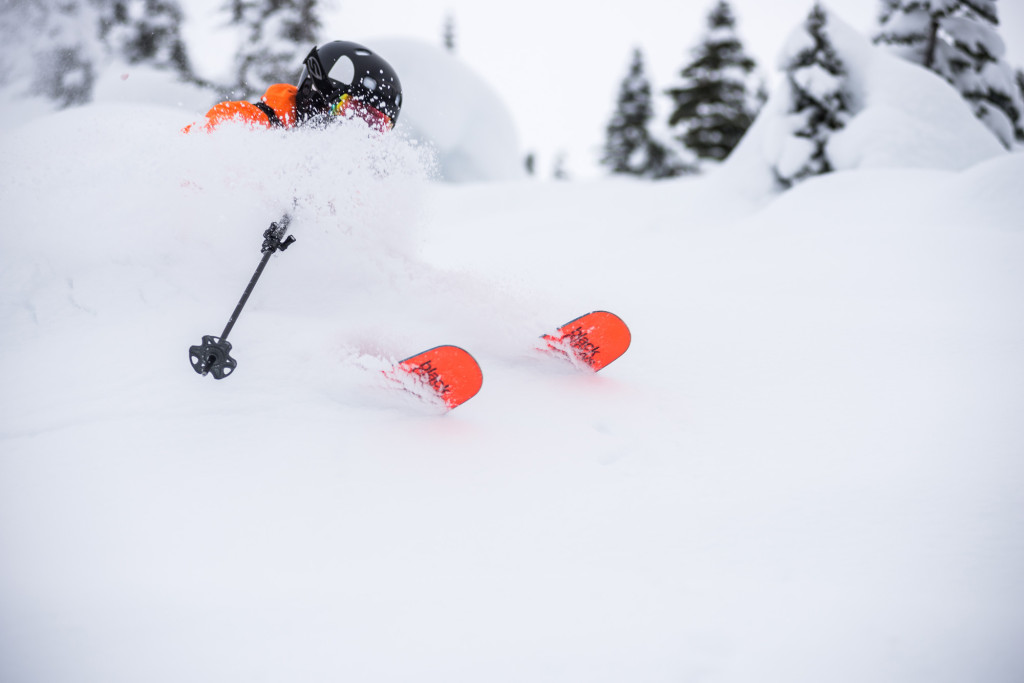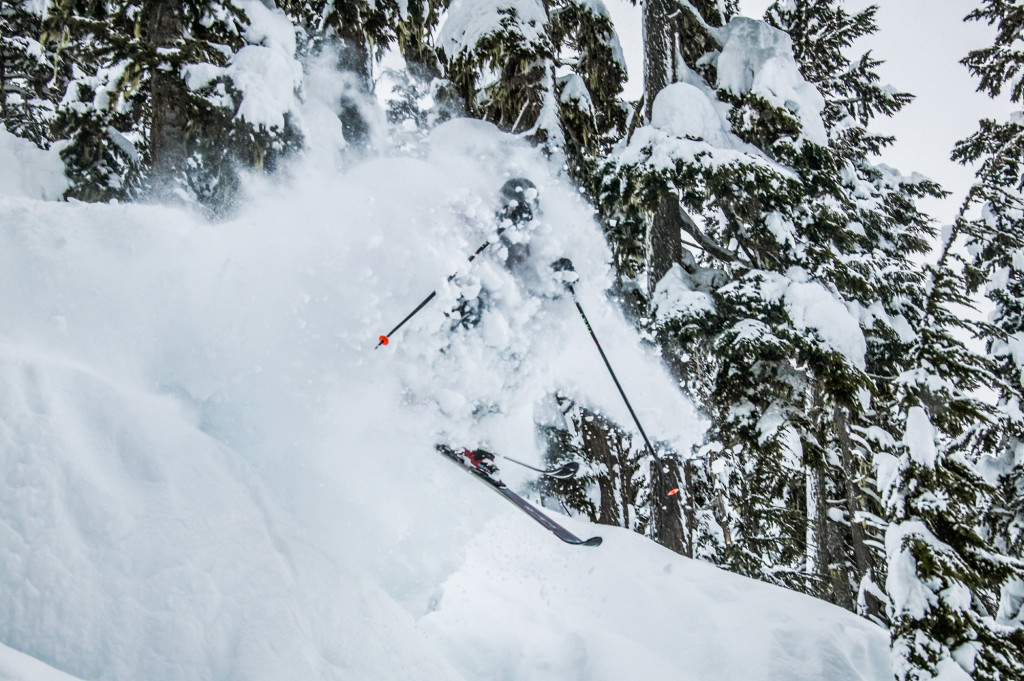Poles. Size matters.
While our skis, boards, boots and bindings tend to hold well-deserved high priority status in terms of careful gear selection, poles are a key piece of equipment not to be undervalued. The wrong poles can greatly hinder your progress as a shredder-in-training as their weight, length and function can have a significant impact on your form (and fun). Not convinced? Read on.

Choosing the right length is one of the more obvious features to consider when selecting a pair of poles. As a general rule, you want your elbows to bend at a 90° angle when you hold your poles upside-down with your hand under the basket. Longer poles will make it harder to lean forward and ski more aggressively, putting you in the proverbial backseat and increasing the likelihood that you’ll flop and flail your way down the run directly below a chairlift full of hot babes/handsome dudes/obnoxious teenagers. Retractable or adjustable poles have become popular options, as they provide the opportunity to work with different lengths depending upon the terrain, and are widely used by snowboarders in the backcountry thanks to their ability to shrink up and slip into a backpack with ease.
Two other features of a ski pole that sometimes get overlooked are the straps and the powder basket. When it comes to straps, the question is really whether or not to use them. On groomers or hard packed and sticky snow, the strap can be a really helpful tool as it ensures you’ll finish the day with the same number of poles you started with. In avalanche terrain, however, straps can be a hazard as the first thing we’re told to do if caught in a slide is lose our skis and poles ASAP. Many heli ski companies and backcountry ski guides will recommend removing your straps altogether to break the habit of slipping them over your hands at the top of a run. As for powder baskets, options range from small and simple to obscenely large and colourful. This is a matter of preference for the most part, although the larger baskets will act like snowshoes on the bottom of your poles, keeping them afloat in the deep stuff if you like to plant rather than sweep and pivot. And, on a completely frivolous but not unimportant note, bright baskets and poles can add a nice pop of colour to your ski photos…

The final word on poles is the material they’re made from. If you’re using chairlifts, cats and helicopters to get around, it doesn’t make a whole heap of difference what you’re carrying, although lighter poles are certainly easier to manoeuvre. Once you start to climb mountains on skis and skins, however, every ounce counts. Graphite, carbon and fiberglass are commonly found in modern composite poles, allowing for more shock absorption and less conductivity, meaning slightly warmer grips and hands on chilly alpine days. Aluminum poles have long been the standard, however, given that the material is cheaper, lighter and less likely to break than the more fragile composites. As with anything, it’s a matter of opinion and personal preference.

You see? Poles. They aren’t just for show.


